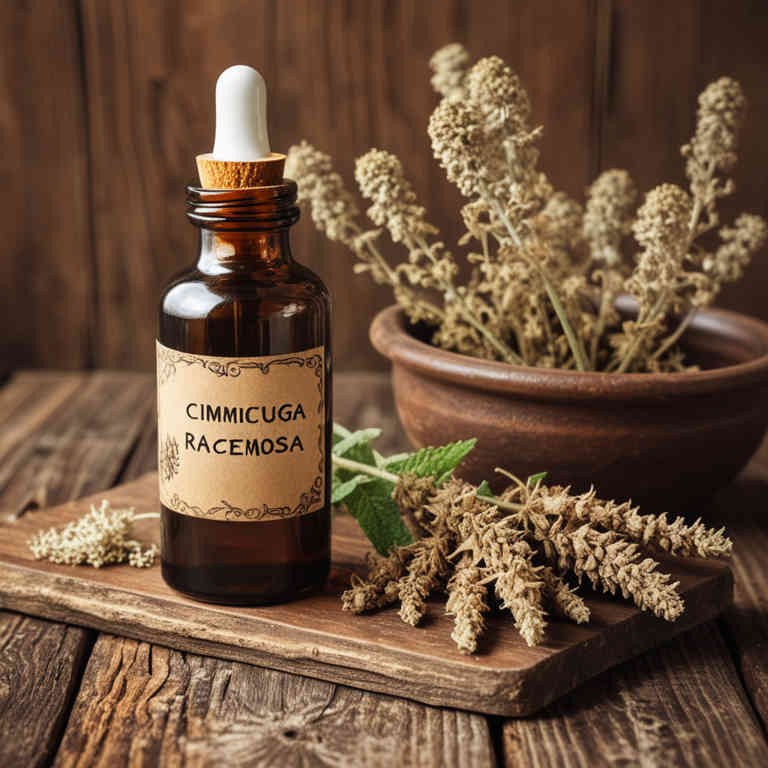Cimicifuga racemosa tincture for medicinal use

Cimicifuga racemosa tincture is a concentrated liquid preparation made from the roots of the black cohosh plant.
It is commonly used in herbal medicine to support hormonal balance, particularly in women experiencing menopausal symptoms such as hot flashes and mood swings. The tincture is typically taken orally in small doses and is valued for its potential to alleviate discomfort associated with hormonal changes. It is often used as a natural alternative to conventional hormone replacement therapy.
However, it should be used under the guidance of a qualified herbalist or healthcare provider to ensure safety and proper dosage.
Uses
Cimicifuga racemosa tincture has been used to alleviate symptoms of menopause, such as hot flashes, mood swings, and sleep disturbances.
Historically, it was employed by Native American tribes for its purported ability to ease menstrual discomfort and promote vitality. In traditional medicine, it was also used to treat nervousness, fatigue, and joint pain. Modern herbal practitioners continue to use it as a natural alternative to hormone replacement therapy, though its efficacy and safety remain subjects of ongoing research.
Due to its potential for side effects and interactions, it is typically recommended under the guidance of a qualified healthcare provider.
Benefits
Cimicifuga racemosa tincture has health benefits such as alleviating menopausal symptoms, improving mood, and supporting hormonal balance.
It is traditionally used to help manage hot flashes, night sweats, and irritability associated with menopause. The tincture may also have antidepressant-like effects and can support emotional well-being. It is often used as a natural alternative to hormone replacement therapy.
However, it should be used under the guidance of a healthcare professional to ensure safety and appropriateness for individual health needs.
Constituents
Cimicifuga racemosa tincture active constituents include compounds such as triterpene glycosides, isoflavones, and alkaloids.
These compounds are believed to contribute to the herb’s traditional use in supporting hormonal balance and alleviating symptoms of menopause. The triterpene glycosides may have adaptogenic properties that help the body manage stress. Isoflavones are thought to exert mild estrogenic effects, which may help with hot flashes and mood swings.
Alkaloids in the tincture may also play a role in modulating neurotransmitter activity and promoting overall wellness.
Preparation
To make Cimicifuga racemosa tincture, first gather fresh or dried roots of the plant, ensuring they are free from pesticides and contaminants.
Wash the roots thoroughly and chop them into small pieces to increase surface area for better extraction. Place the chopped roots in a clean glass jar and cover them completely with high-proof alcohol, such as 80-100 proof vodka or ethanol. Let the mixture sit in a dark, cool place for 4 to 6 weeks, shaking the jar gently every few days to facilitate extraction.
After the steeping period, strain the liquid through a fine mesh or cheesecloth to remove plant material, then store the tincture in a dark glass bottle away from light and heat.
Side Effects
Cimicifuga racemosa tincture may lead to gastrointestinal discomfort, including nausea, vomiting, and diarrhea.
It can also cause headaches, dizziness, and sleep disturbances in some individuals. Long-term use may result in hormonal imbalances due to its phytoestrogen content. There is a risk of liver toxicity with prolonged or high-dose usage.
Individuals with a history of estrogen-sensitive conditions should use this preparation with caution.